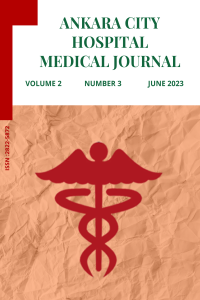Abstract
To the Editor pseudogout (PG) is an acute arthritis induced by calcium pyrophosphate dihydrate crystal deposition, and it frequently develops in the
elderly population. Non-steroidal anti-inflammatory drugs and/or corticosteroids, such as prednisolone (PSL), administered either by local intra-articular injection or systemic therapy remain the mainstay of PG treatment.1
Macrolide antibiotics (MACs), such as clarithromycin (CAM) and azithromycin (AZM) provide not only antibacterial activity but also anti-inflammatory properties. Several recent studies reported the successful treatment
of rheumatoid arthritis2 and polymyalgia rheumatica3 using CAM as an anti-inflammatory agent. Herein, we describe a case of PG treated with PSL
in combination with CAM, considering their anti-inflammatory properties.
A 92-year-old female with Alzheimer’s disease, hypertension and osteoporosis presenting with fever, arthralgia and articular swellings in her bilateral
shoulders, elbows, and wrists, was referred to our hospital. At the age of 91,
she was diagnosed with PG by an orthopedic doctor. So far, she has experienced two PG attacks. The laboratory findings on this visit were as follows: white blood cell count, 8,990/μL (basophils, 0.3%; eosinophils, 1.0%;
neutrophils, 78.4%; lymphocytes, 12.7%; and monocytes, 7.6%); C-reactive protein (CRP), 11.81 mg/dL; rheumatoid factor, 5 IU/L; anti-cyclic citrullinated peptide antibody, 0.5 U/mL; and antinuclear antibody titer, 1:40.
A blood culture yielded negative results. No abnormal findings suggestive
of infection could be found in the systemic survey, including the chest roentgenogram and urinalysis. Bone roentgenogram revealed intra-articular
calcification compatible with PG. The aforementioned symptoms were similar to those of the previous PG attacks; therefore, the patient was diagnosed with PG attack. Initially, she was treated with acetaminophen (800
mg/day), which was unsuccessful, although it was effective in the previous
PG attacks. Therefore, she was treated with PSL (10 mg/day). Seven days
after PSL treatment, fever and articular symptoms rapidly improved with a
decreased CRP of 1.12 mg/dL. Therefore, the PSL dosage was decreased
to 7.5 mg/day. A week later, fever and articular symptoms relapsed with an
Keywords
Abstract
Details
| Primary Language | English |
|---|---|
| Subjects | Traditional, Complementary and Integrative Medicine (Other) |
| Journal Section | Letter To The Edıtor |
| Authors | |
| Publication Date | July 3, 2023 |
| Published in Issue | Year 2023 Volume: 2 Issue: 3 |

